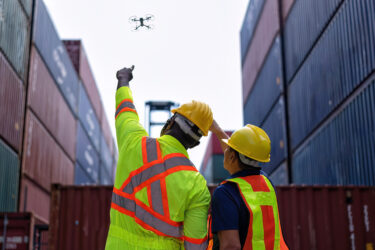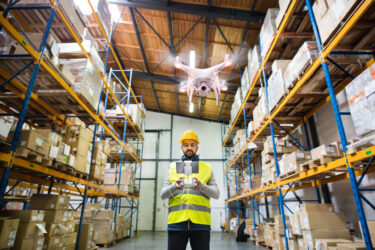

The economic value of data is equated by experts with oil value for the economy in the XVIII century. Today, it is estimated that open transportation data’s economic potential can reach over 720 billion dollars on a global scale.
The main task in intelligent cities is to solve problems based on data, in which data is gathered, processed, and analyzed correctly. The information about road traffic, real-time localization of public transport vehicles, or parking space occupancy can practically influence traffic optimization and estimations of potential bottlenecks. The key feature of future smart city systems will be distributed systems. Lack of a central processing unit will reduce failures of complex systems to single nodes in a network. It might increase the scaling level of systems and the capability to process data locally on edge devices.
Active traffic management and control
Increasing traffic intensity in urban agglomerations causes a growing number of crossroads equipped with traffic lights. The primary traffic rules are enhanced with traffic signals, which reduce the number of car bumps and accidents. However, active light traffic management should be an inseparable part of modern smart cities. In many countries worldwide, traffic lights control systems have only a regular sequence of lights change what foreclose dynamic changes.
The first step to more effective crossroads management is to make a few signals traffic change scenarios based, e.g., time of the day. Thanks to this solution, a flow improvement is noticeable.
Behavior prediction in road traffic
Access to traffic data can depict the relocation of citizens. The modern Intelligent Transport System (ITS) task will be processing, analysis, and management in real-time. In this approach, it is possible to use the classic prediction methods example, the autoregressive integrated moving average (ARIMA) model. However, high computational costs for high-dimensional multivariate time series forecasting should be kept in mind.
According to scientists, deep neural networks will predict dimensional multivariate forecasting tasks in road traffic or congestion. To achieve high accuracy, two types of prediction should be distinguished: short and long-term. Two types of patterns are repeated – short-term refers to daily changes with morning and evening peak, while long-term refers to weekly differences between workdays and weekends.
To present a repeatable change pattern in long-term local data set of crossroads from pomeranian voivodeship in Poland from 1.03-10.05 period corresponding with spring covid-19 lockdown were used as an example.
Orange vertical lines indicate, adequately from the left side, imposing restrictions and further two stages of removing restrictions. As we can see from the chart, the introduction of substantial limits resulted in a significant decrease in road traffic (30% on workdays and 42% during the weekends). Nevertheless, road traffic density quickly assumed a repeated pattern. Moreover, worth adding that a larger deviation about 12th April was related to Easter time.
Traffic management in cities
Management systems help to decrease travel time and traffic incidents by gathering and analyzing data from traffic monitoring. Local traffic control is an important task in strategies of every department of transportation which provides necessary real-time traffic information. It can help to reduce congestion and undesirable events as well as increase detection of communications problems. Public transportation services can this way improve performance in long-term approach.
Authors of innovative solutions in the traffic management field face the challenge of maintaining their solution’s highest safety level. Management of the critical infrastructure determines that deploying solutions should have high reliability absolute in Safety Integrity Level (SIL). Groups of scientists and enterprises are developing effective traffic management methods based on vision systems, magnetic induction sensors, and “vehicle to infrastructure” (V2I) communication. The future of traffic management and maintenance will be systems where available data from sensors will be computed in a real-time optimal time for the next lights change cycle. Adaptive management and data exchange between further crossroads can significantly improve traffic flow and minimize pollution concentration within the junction. Only when self-driving cars will quickly replace all standard cars can the future shape in a different direction.
Author: Adam Strużyński, DAC.digital
ELDRO24 is an IT software designed to help manage the maintenance of technical infrastructure. It allows us to automatically monitor maintenance contracts and works as well as to control their quality and timely delivery.




